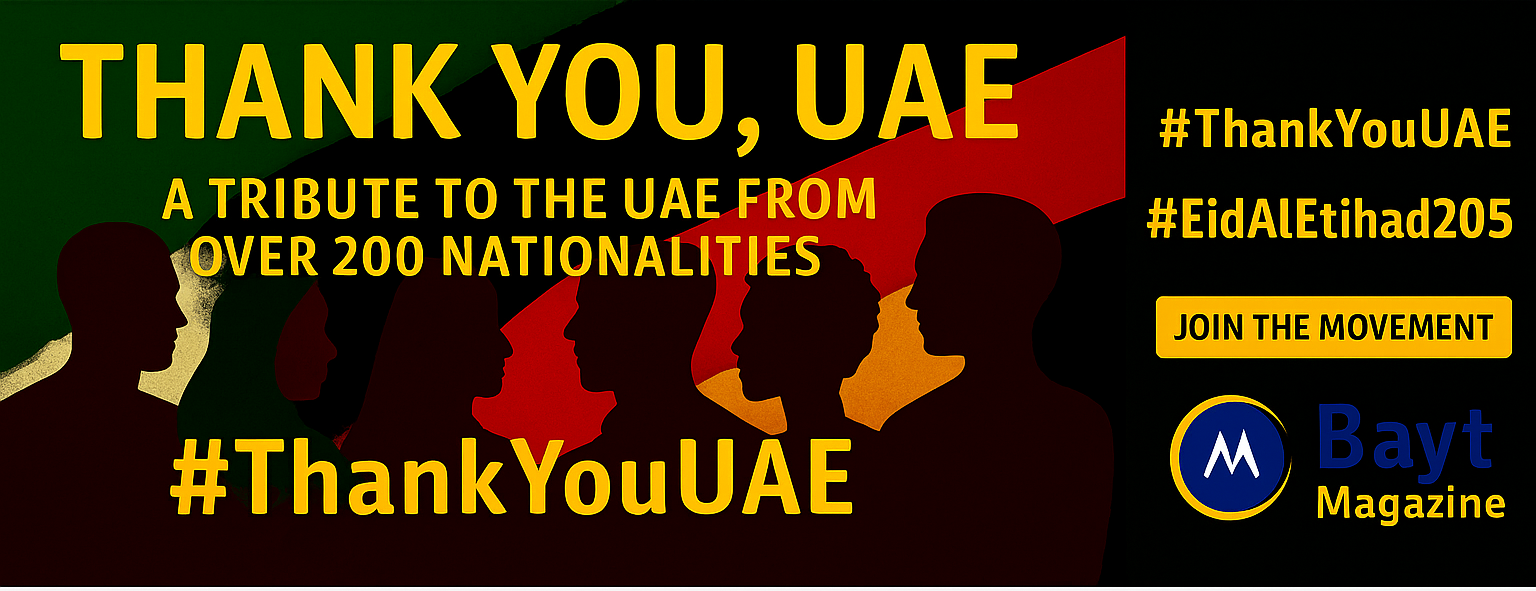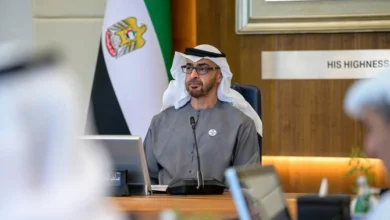![Why the GCC Economy Will Stay Strong in 2025 [Expert Analysis]](https://baytmagazine.com/wp-content/uploads/2025/02/5e92c10f-7f0d-492e-a1ce-2add4333ac35-780x470.png)
Why the GCC Economy Will Stay Strong in 2025 [Expert Analysis]
The GCC economy shines as a bright spot in the global digital world. Member countries have achieved steady growth and kept inflation under control. The region’s non-oil sector showed remarkable strength with a 3.7% expansion, despite an overall GDP growth of 1.8% in 2024.
The GCC’s credit ratings have reached their peak since 2017, backed by strong economic foundations. The UAE and Saudi Arabia lead this momentum with solid economic performance. The UAE’s Purchasing Managers’ Index hit 55.4 in December, while Saudi Arabia recorded an even better 58.4. These numbers point to strong growth in non-oil sectors. The region looks set to surpass its global competitors in 2025 through smart investments and ongoing economic reforms.
Current State of GCC Economy
“The region has shown remarkable resilience in the face of global disruptions, moving steadily on their diversification agenda. It will be important to continue to exercise prudent economic policies to secure a sustainable future of growth” — Safaa El Tayeb El-Kogali, World Bank GCC Country Director
The [Gulf Cooperation Council](https://baytmagazine.com/foreign-capital-surge-uae-tops-gulf-cooperation-council-with-680-4m/) shows remarkable economic strength. The region’s GDP growth will likely bounce back to 2.8% in 2024 and jump to 4.7% in 2025. The GCC’s nominal GDP went past USD 2 trillion in 2023, which pushed its share in the MENA region’s economy from 44% to 51.3%.
Key economic indicators for 2024
Member states show different growth patterns in their real GDP. Bahrain leads with 3.5% growth, Kuwait follows at 2.8%, and Saudi Arabia projects 2.5%. The GCC’s financial health remains robust. The fiscal surplus should hit 0.1% of GDP in 2024, while the current account surplus stays strong at 7.5%.
Non-oil sector performance
The non-oil economy remains the main driver of growth. GCC’s real non-oil growth averaged 3.6% in 2023. The UAE stands out with 6.2% non-oil growth, and Abu Dhabi leads the pack at 9.1%. Kuwait’s non-oil sector made big strides with 4.7% growth, especially in tourism and services.
Consumer spending trends
Consumer confidence stays high throughout the GCC. The retail sector grew from USD 203 billion in 2018 to USD 215 billion in 2023. Here’s what spending looks like:
- E-commerce now takes twice the share of total retail since 2018. The UAE and Saudi Arabia make up over 80% of online sales
- UAE’s real consumer spending should grow 5% year-over-year in 2024
- Saudi Arabia’s retail sector stays strong with a six-percentage-point net positive trend in spending plans
Job market trends support this growth. The total working population should pass 30 million by 2028. More jobs and higher women’s participation in the workforce help boost household income and consumer spending.
Major Growth Drivers for 2025
The GCC’s economic expansion continues to surge forward, driven by powerful sector-specific growth factors. Regional GDP growth will likely reach 3.6% in 2025, which is well above the global forecast of 2.8%.
Digital transformation projects
The GCC’s digital world is changing rapidly. The digital transformation market should grow at a CAGR of 25.7% during 2024-30. Governments throughout the region have launched detailed initiatives, such as the UAE Digital Government Strategy and Qatar National Vision 2030. The banking sector guides this transformation as institutions implement digital banking applications, API management, and digital-signature capabilities.
Tourism sector expansion
Tourism shows remarkable momentum in the region. Saudi Arabia welcomed over 106 million tourists in 2023, a 56% jump from 2019. Dubai reached a milestone with 17.2 million international visitors, reflecting 20% year-over-year growth. The sector’s GDP contribution will rise from USD 130 billion in 2023 to more than USD 340 billion by 2030.
Manufacturing capabilities
Manufacturing serves as the life-blood of economic diversification, highlighted by these developments:
- Saudi Arabia’s manufacturing sector grows at 7.5% annually
- Qatar opened 60 new factories in 2021, adding over AED 55.08 billion to GDP
- The UAE wants to boost the manufacturing sector’s GDP contribution from AED 132.19 billion to AED 297.43 billion by 2031
The region invests heavily in AI infrastructure and forms strategic collaborations with global tech giants while building resilient data security frameworks. These efforts support the broader goal to reduce dependence on hydrocarbon revenues and create jobs in high-tech sectors.
Investment Climate Improvements
Strong investment policies and reliable startup support have made the GCC an attractive destination for global capital. The UAE has achieved record levels of foreign direct investment, which makes it a global leader in FDI compared to its economy size.
Foreign investment policies
Recent regulatory changes have made the business environment more appealing across GCC states. The UAE allows 100% foreign ownership in most sectors and ranks 16th globally in Ease of Doing Business. Dubai Chamber of Commerce saw new business registrations jump by 43% as a result. Saudi Arabia has improved its investment landscape by offering loan guarantees that cover up to 90% of funding for tech startups through the Technology Development Financing Initiative.
Startup ecosystem development
Abu Dhabi’s startup ecosystem value grew by 28%, making it the 6th fastest-growing globally. Several key ecosystem players have powered this growth:
- Abu Dhabi Global Market (ADGM)
- Mubadala Investment Company
- Abu Dhabi Investment Office (ADIO)
- startAD
- Abu Dhabi Department of Economic Development
The UAE shows its dedication to startup growth through its Entrepreneurial Nation vision to create 20 unicorns by 2031. Hubs like DIFC’s Fintech Hive, DMCC’s Astro Labs, and Dubai Internet City’s In5 have built dynamic spaces for new entrepreneurs. These hubs make networking easier and boost innovation while connecting startups to capital and commercial opportunities.
Saudi Arabia’s startup ecosystem has made impressive strides. Startup growth increased by 33% in 2023, and the ecosystem secured a record-high USD 1.38 billion in venture funding. The government’s active support through detailed programs and funding initiatives has led to this success.
Regional Economic Integration
GCC nations are strengthening their regional bonds through strategic economic initiatives. These countries show their steadfast dedication to integration by expanding trade networks and working together on development projects.
Inter-GCC trade growth
Trade between GCC nations has made remarkable strides. Intra-regional goods exports have tripled in the last decade to reach AED 257.04 billion. These exports make up less than 10% of GCC’s total global exports. This is a big deal as it means that there’s room to grow when compared to the EU’s 50-60% internal trade share.
Joint infrastructure projects
GCC’s shared infrastructure vision reshapes the scene with projects that improve regional connectivity. The GCC-wide railway network stands as the life-blood initiative that aids passenger and cargo transportation between member states. Member states collaborate on several other fronts:
- Energy transition projects, including renewable infrastructure and carbon capture facilities
- Cross-border digital platforms and innovation hubs
- Unified industrial development programs
Shared regulatory frameworks
GCC has achieved major milestones in regulatory harmonization. Member states have approved a fund passporting framework that will launch in early 2025. This framework will streamline cross-border investments and make the region more attractive to international investors. The customs union launched in 2003 and the common market established in 2008 are the foundations for deeper economic integration. The GCC Standardization Organization’s technical committees support these initiatives.
The GCC region shows promise of a reliable economic future through 2025 and beyond. These member states showed remarkable resilience in their economies. Their non-oil sector performance propels sustainable growth in the region consistently.
The GCC economies are set for sustained growth. This comes from their strong digital transformation initiatives and tourism expansion. Their manufacturing capabilities continue to advance steadily. These changes line up with the region’s goal to reduce dependence on hydrocarbons and create valuable job opportunities.
Saudi Arabia and the UAE lead an economic transformation that makes the GCC attractive to global investors. They offer detailed support programs and investor-friendly policies. The member states work together on shared infrastructure projects. Their coordinated regulatory frameworks strengthen the GCC’s standing as a unified economic force.
The GCC’s economic path shows signs of outperforming global peers steadily. Member states stay dedicated to economic diversification. They combine this with smart fiscal policies and strategic investments. These elements build a strong foundation for long-term growth. The GCC continues to cement its role as a key player in the global economy.




